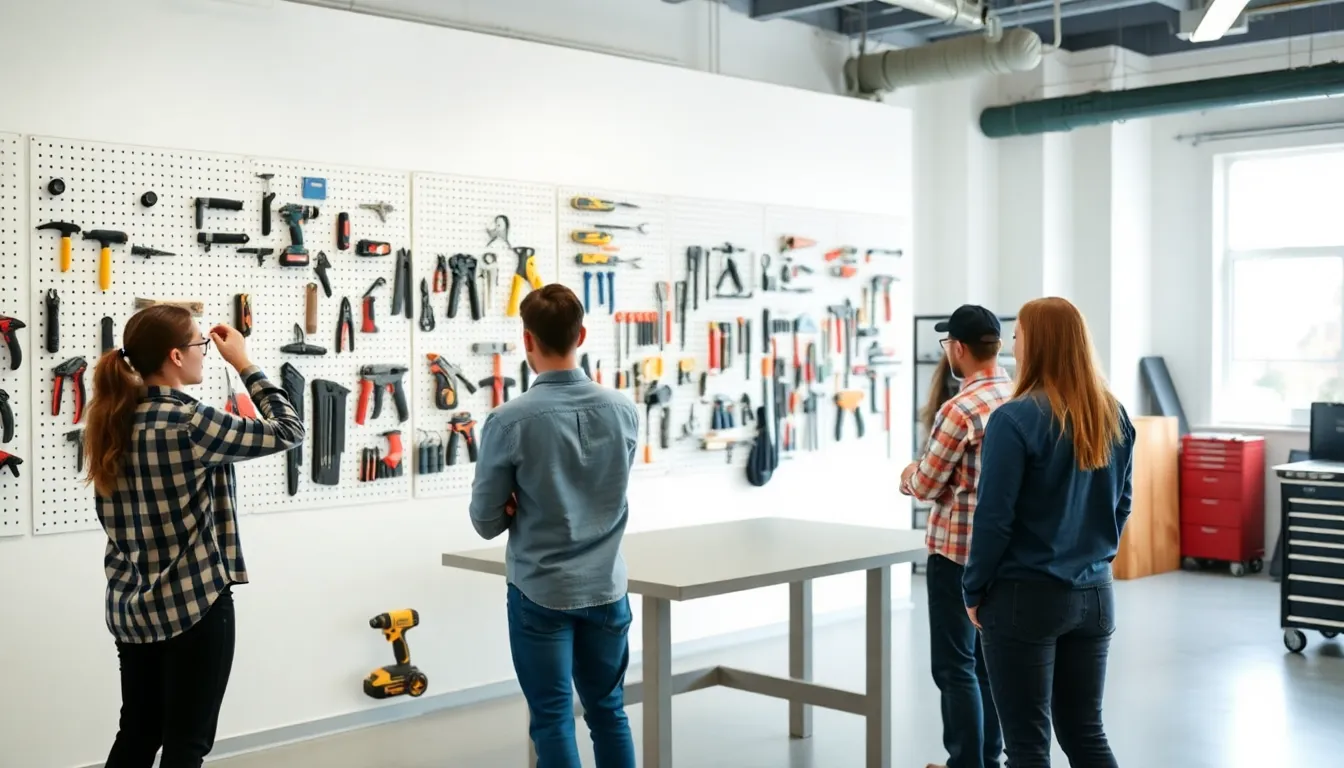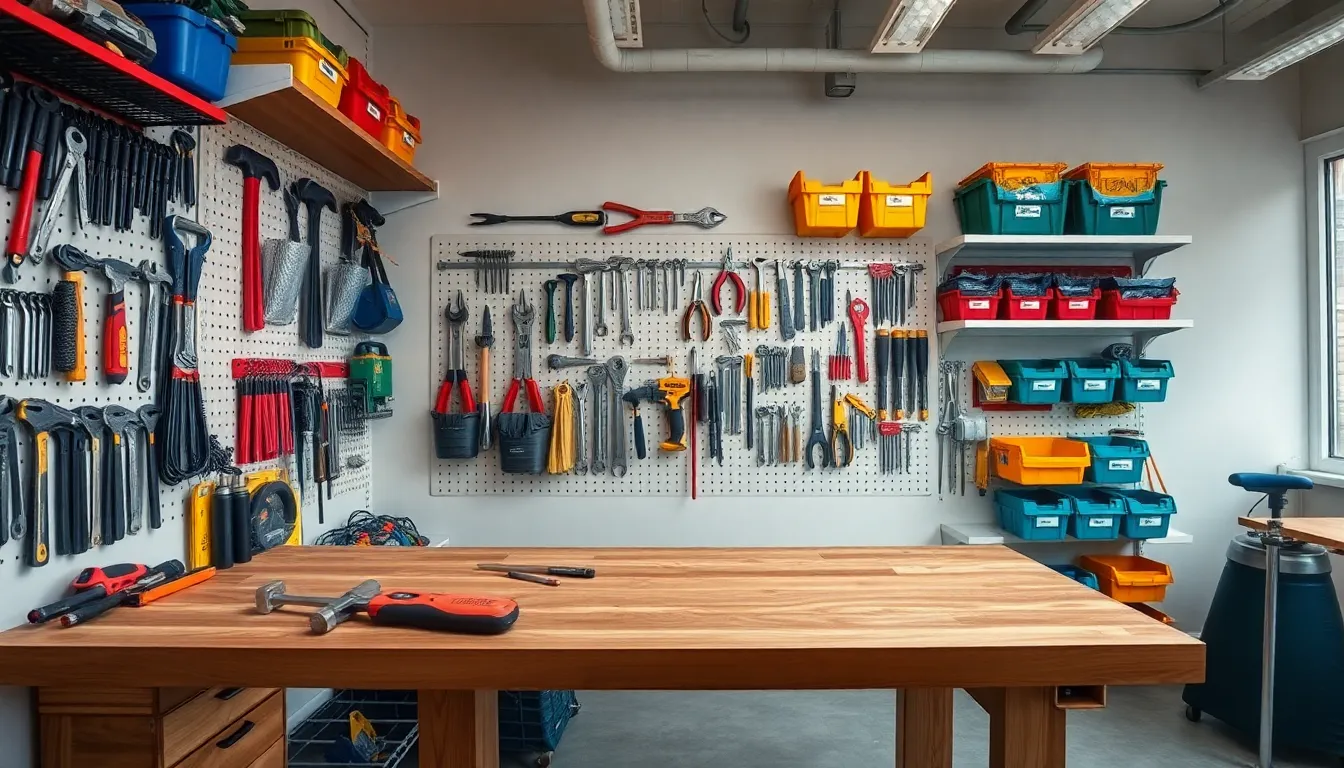Are your tools scattered around your workshop like a game of hide and seek? Good news. Organizing your tools not only brings peace to your workspace but also helps you work more efficiently. Imagine not having to dig through piles of stuff just to find that elusive wrench. In this guide, we’ll jump into the art of tool organization, making your life easier and your workshop more productive. Let’s get those tools in order and perhaps add a sprinkle of humor along the way.
Table of Contents
ToggleUnderstanding The Importance Of Tool Organization

Tool organization often gets overlooked, yet it plays a crucial role in anyone’s workshop. Imagine having everything you need right at your fingertips. Not only does this save time, but it also reduces frustration, allowing creativity to flow freely.
When tools are organized, they’re easier to find, which can significantly increase productivity. Picture starting a project without wasting precious minutes searching for that perfect saw or hammer. An organized workshop boosts both safety and efficiency, making it a pleasure to work in.
Plus, a tidy workspace fosters a sense of accomplishment. You stand back and see order where chaos once reigned. This sense of pride contributes positively to morale and motivation.
Assessing Your Tool Collection
Before jumping headfirst into organizing, it’s essential to take stock of what you have. Start by gathering all your tools in one place. Yes, this includes the ones buried under dust and cobwebs. Analyze your collection, what do you really need?
Sometimes, people discover duplicates or tools that haven’t seen the light of day in years. Create three categories: keep, donate, and discard. Be ruthless. If a tool hasn’t been used in the past year, it’s probably time to say goodbye (or at least to the donation box).
After you’ve assessed, compile a list of tools that are essential for your projects. This will guide how you set up your workshop, ensuring that you have a logical system for storing what you use most frequently.
Choosing The Right Storage Solutions
Now that you’ve assessed your collection, it’s time to explore storage solutions. The options are vast, so consider what will work best in your space.
Toolboxes and Chests: For smaller tools, these keep things compact and portable. A rolling toolbox can be a lifesaver, especially for those who need to move tools around.
Shelving Units: Open shelves make everything visible, which encourages you to put things back where they belong. You can group your tools by type for easy access. For example, one shelf could house hand tools, while another is dedicated to power tools.
Pegboards: A pegboard offers a great way to use wall space. Hang tools where you can see them, and easily access them when needed. Plus, a pegboard can be a beautiful canvas, arrange your tools in a pattern for a personalized touch.
Implementing Organizational Systems
To really take your organization to the next level, carry out systems. Use bins, drawers, or magnetic strips to keep like tools together. Consider color-coding for extra flair: red bins for cutting tools, blue for measuring, and so forth. This adds both a functional and aesthetically pleasing element to your workshop spaces.
Labeling Tools And Storage Areas
Once everything has its home, don’t skip the important step of labeling. Labels serve as the GPS for your tools, guiding you to their exact location without hesitation.
Use waterproof labels for durability. Ensure they’re clearly visible and, if possible, include a picture of the tool next to the label for quick identification. If someone else uses your workshop, these labels become an invaluable communication tool. They’ll know exactly where to find and return tools, making collaboration smoother.
Regularly updated labels help keep up with any changes. If you add new tools or change storage solutions, a quick label change keeps everything on track and helps maintain organization.
Maintaining An Organized Workshop
You’ve put in the effort to organize, but maintaining that organization can be the real challenge. Establishing a routine is critical. At the end of each project, take a few minutes to put tools back where they belong. This small habit can create a culture of organization in your workshop.
Every few months, conduct a quick inventory check to remove any tools you no longer need or repair any broken ones. Seasonal changes might also influence what tools are being used. Swap them out as necessary to keep your workspace relevant and efficient.
Also, consider creating a ‘tool maintenance’ day quarterly: clean tools, check for wear and tear, and reorder supplies as needed. This proactive approach will keep your workspace functioning at its best.



